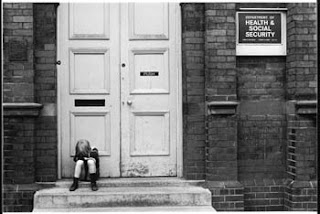Firstly, it was very interesting to hear 'Morning Edition' this week, interview three different writers who have emigrated from various countries to America and write about the immigrant experience, on what it means to become American. One of the writers just happened to be Jhumpa Lahiri. You can hear all three interviews online at npr.org, where you can also find links to their readings etc.
Whilst I was waiting for my prints to dry on Wednesday I popped across the street to the ICP Museum. They currently have four different exhibitions; Cornell Capa: Concerned Photographer; Susan Meiselas: In History; America and the Tintype; and Living with the Dead: W.Eugene Smith and World War II.
I was impressed by all four exhibitions but two particularly struck me with their need to portray the truth of conflict and atrocity to the wider world and seem particularly pertinent to my ramblings last week.
Cornell Capa (brother of Robert Capa, the photographer who took those famous shots of the Normandy beach landings during WWII) worked for Life Magazine from 1946 to 1967 and the Magnum Agency from 1954 onwards. He coined the phrase 'Concerned Photographer' feeling it was his humanitarian duty to educate and change the world through his pictures. He covered the collapse of Peron's regime in Argentina in 1955 and the struggles in Nicaragua after the assasination of Anastasio Somoza in 1956. In 1974 he founded ICP.
 |
Political Dissidents arrested after the assassination
of Nicaraguan dictator, Anastasio Somoza, Managua, 1956
|
Susan Meiselas's work is incredible but not for the faint of heart. She is known for her images of the Nicaraguan Uprising in the 1970s, but has a large body of work about Kurdistan, and Saddam Hussein's massacre of the Kurds in the 1990's. You are compelled to look, even though what you are staring at are stark images of death, violence and destruction. You feel the sorrows of these people, and are outraged and incredulous that a human being could do such things to a fellow human being. I spent a long time with these images. The interesting thing about Meiselas is that she doesn't feel the photograph is the end of the story. She includes a great deal of other documentary evidence to tell the story and will often use text, writing, and interviews together with her own imagery citing photographs as key to memory and history. There is a lot of information about her work on the ICP website as well as her own site which I have included links to.
 |
Photographs of 20-year-old Kamaran Adullah Sabar are held by his family at Saiwan Hill Cemetery.
He was killed in July 1991 during a student demonstration against Saddam Hussein, Kurdistan, Northern Iraq
|
 |
Arbil Taymour Abdullah, 15, the only survivor of mass execution,
shows his wound, Kurdistan, Northern Iraq 1991
|
All four exhibitions run until 4th January if you want to see the work for yourself.
And finally, for anyone who may be interested, ICP is holding a seminar on 12 & 13th December, entitled "What is Real:Documentary Photography and the Politics of Truth".
-1.jpg)
.jpg)
.jpg)
.jpg)






